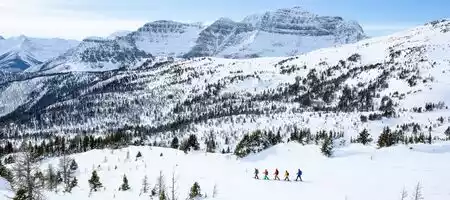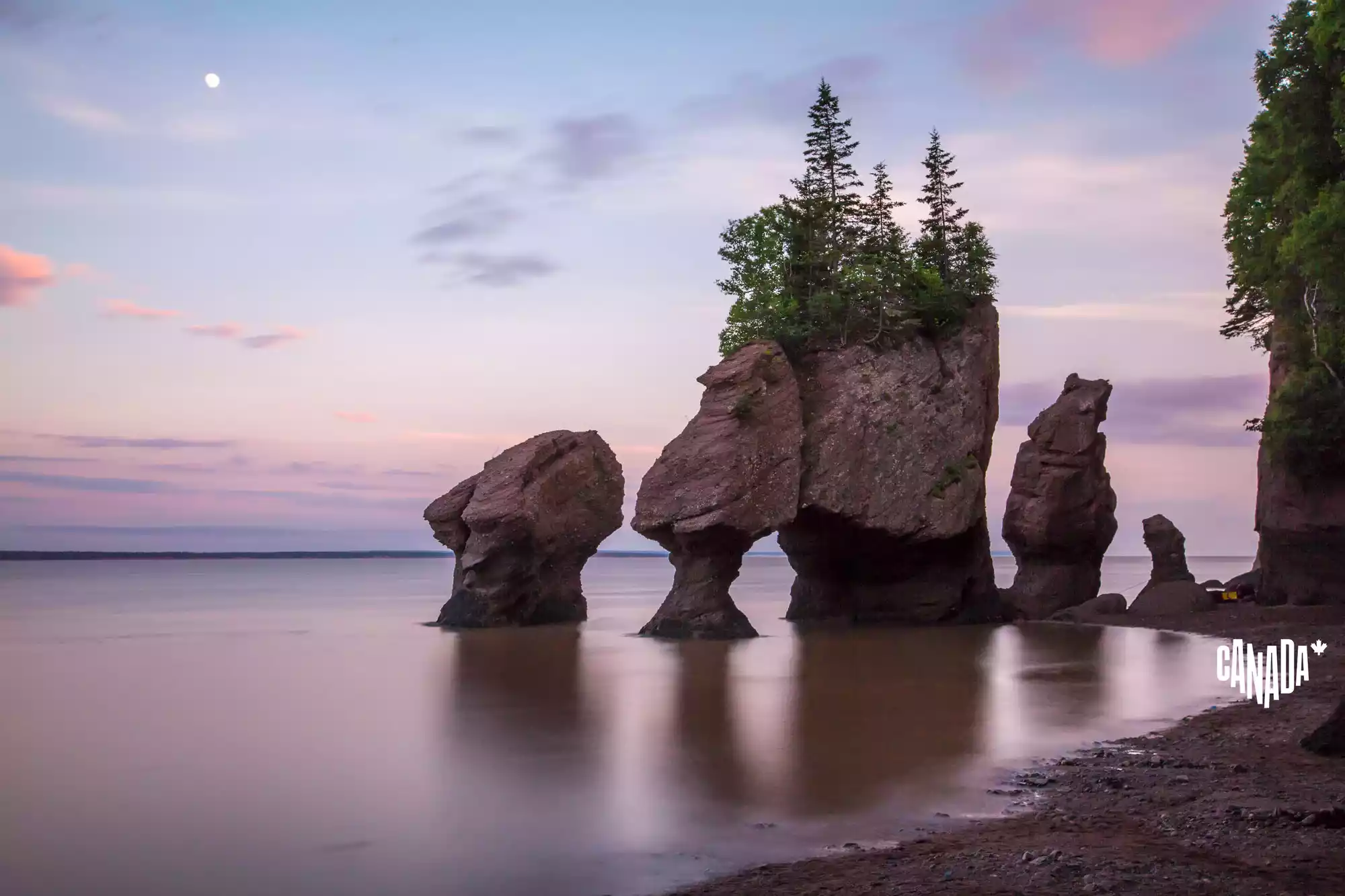

Last updated: March 9, 2022
When travelers first find themselves intrigued by Atlantic Canada, we receive a lot of questions. The most easterly region of Canada comprised of New Brunswick, Newfoundland and Labrador, Nova Scotia and Prince Edward Island, there's a lot to know — and luckily, we're experts in it all.
Whether you're curious what there is to do, want to better understand the best places for certain experiences or simply want to get the season for iceberg viewing, whale watching or festivals, we'll address it all in this article. Here are all your questions about Atlantic Canada, answered.
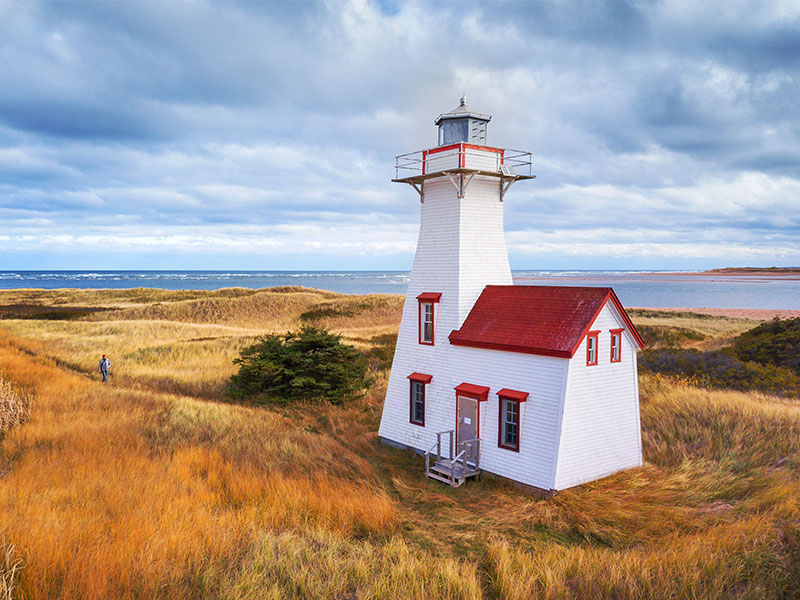 New London Lighthouse, Prince Edward Island. Image courtesy of Tourism Prince Edward Island
New London Lighthouse, Prince Edward Island. Image courtesy of Tourism Prince Edward Island
What are the Atlantic Canada provinces?
There are four provinces that make up Atlantic Canada: New Brunswick, Newfoundland and Labrador, Nova Scotia and Prince Edward Island. The entire region spans over 500,000 square kms (193,000 square mi), yet it makes up less than seven percent of Canada's population. The result? More nature than people, more quaint towns than cities and more miles of coastline than you can explore in one trip.
 Acadian Tintamarre Festival in New Brunswick. Image courtesy of Tourism New Brunswick
Acadian Tintamarre Festival in New Brunswick. Image courtesy of Tourism New Brunswick
New Brunswick
Combining Acadie, Celtic and Indigenous cultures with the English and French languages, New Brunswick is a multifaceted province dating back 11,000 years. Influenced by Indigenous, French, British, Irish and Scottish settlers, it is the only officially bilingual province in Atlantic Canada and has been for over 50 years.
Culture runs deep throughout the province, be it in art galleries, concert venues, museums or even restaurants. The flavor profile of New Brunswick is incredibly fresh and varied, and you won't struggle to find delicious seafood, Indigenous bannock, Acadian fricot and local craft beers. Microbreweries exist in every region of the province, and every coastal community is home to working fishing wharves.
 Kayaking at Hopewell Rocks in the Bay of Fundy. Image courtesy of Tourism New Brunswick
Kayaking at Hopewell Rocks in the Bay of Fundy. Image courtesy of Tourism New Brunswick
Once fueled, be sure to get out and explore New Brunswick's best attractions. Most famous for the Bay of Fundy with its highest tides in the world, travelers often visit Hopewell Rocks twice in one day, once to walk on the ocean floor and later to kayak above where they were standing just moments earlier. With 160 billion tonnes of seawater gushing in and out of the bay, it's truly a sight to behold and a highlight of any itinerary.
Of course, New Brunswick has many more coastal experiences than those found in Fundy National Park. Home to the warmest saltwater beaches in Canada (and in fact, the warmest anywhere north of Virginia), there are over 50 fantastic beaches to discover, explore and spend the day on. Out at sea, you'll also have ample opportunities for whale watching. The swirling nutrient-waters from the tides at Bay of Fundy draw species such as Fin, Humpback and Minke whales, particularly from June to October.
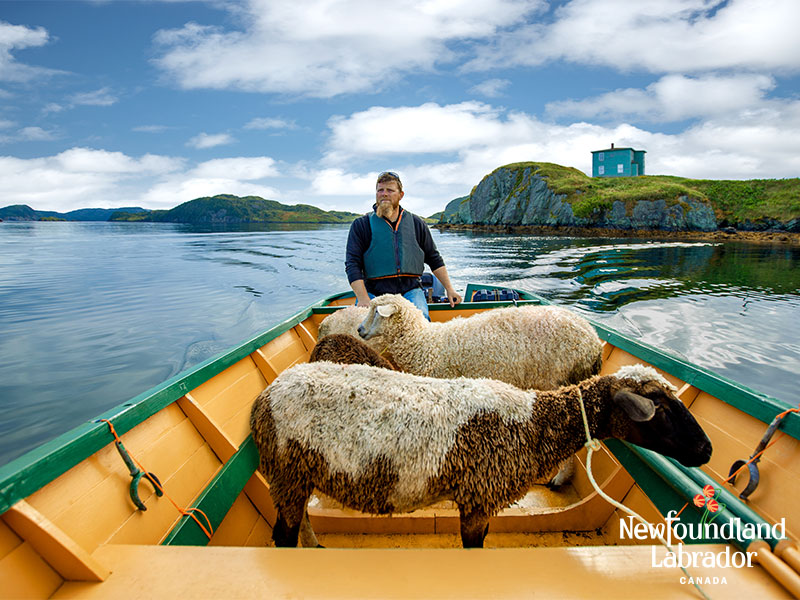 A man with his sheep in Newfoundland and Labrador. Image courtesy of Newfoundland and Labrador Tourism
A man with his sheep in Newfoundland and Labrador. Image courtesy of Newfoundland and Labrador Tourism
Newfoundland and Labrador
Newfoundland and Labrador is Canada’s most easterly province, best known for its rugged landscapes, icebergs and abundant marine wildlife. The region boasts a colorful past of Vikings, indigenous Beothuk, Basque whalers and a strong dose of Irish settlers. To this day, countless lighthouses still stand testament to the stories, including those at Cape Spear, Ferryland and Cape Bonavista.
And while these lighthouses provide safe passage for ships, there's more sailing past Newfoundland and Labrador. Iceberg season runs from spring to early summer, though the further north you find yourself the longer the season lasts. Sweeping in from the glaciers of Greenland and Canada's Arctic, massive icebergs dating back 10,000 years can be spotted from St. Lewis, Battle Harbour, Red Bay, Point Amour, St. Anthony, Twillingate, Fogo Island, Bonavista and Cape Spear. Check out our Iceberg Alley Newfoundland tour for the best way to see and do it all.
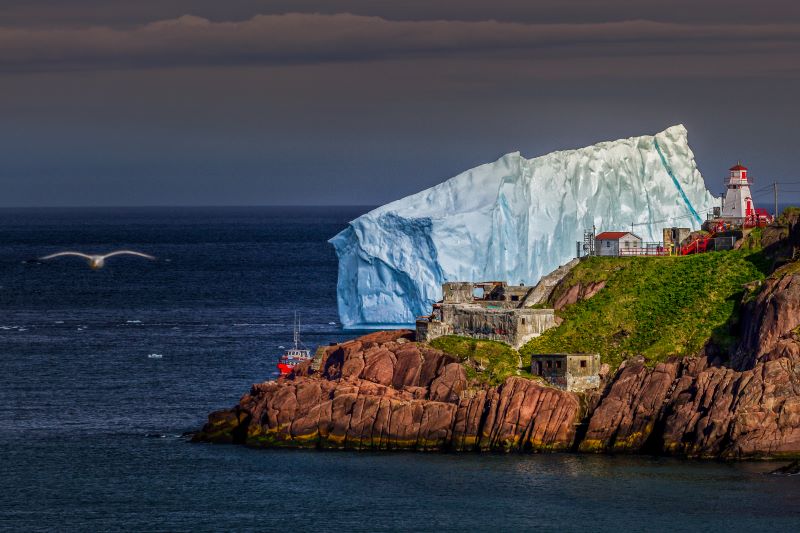 An iceberg floating off the coast of Newfoundland and Labrador. Image courtesy of Newfoundland and Labrador Tourism
An iceberg floating off the coast of Newfoundland and Labrador. Image courtesy of Newfoundland and Labrador Tourism
Outside of iceberg season, Newfoundland and Labrador has plenty to offer its visitors. The world's largest population of humpback whales create great chances for whale watching, the 29,000 kms (18,000 mi) of coastline offer ample space for kayaking, rafting or hiking, and festivals in honor of music, food, fish, film, theater and crafts can be experienced throughout the seasons. Be sure to check out the Newfoundland and Labrador Folk Festival in St. John's, which has been running for 46 years and begins the weekend of July 8th to 10th.
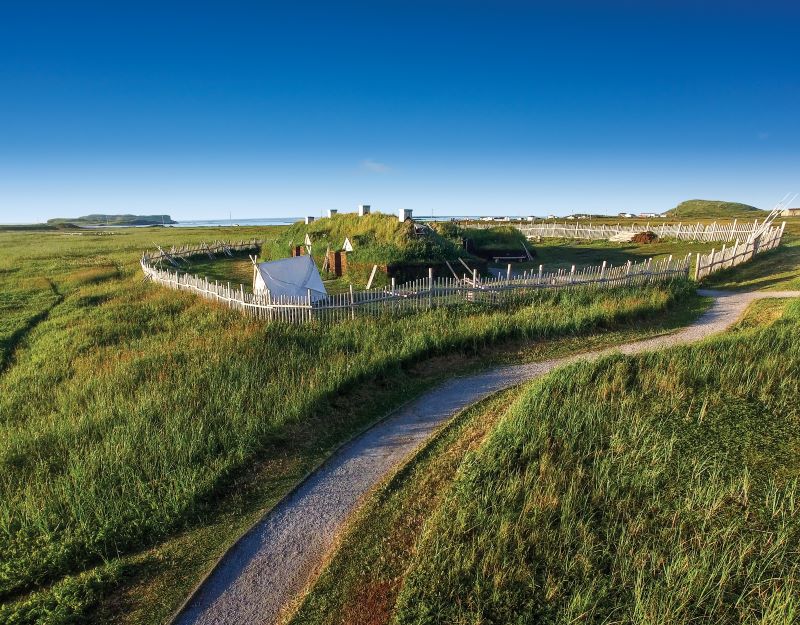 L'Anse aux Meadows National Historic Site. Image courtesy of Newfoundland and Labrador Tourism
L'Anse aux Meadows National Historic Site. Image courtesy of Newfoundland and Labrador Tourism
For those fascinated by its Viking history, a visit to L'Anse aux Meadows is not to be missed. A UNESCO World Heritage Site and archaeological site dating back about 1,000 years, it's here you can find the remains of an 11th-century Viking settlement and evidence of the first European presence in North America. Timber-framed structures and approximately 800 wooden, bronze, bone and stone artifacts confirm the Norse origins.
And before we move on, we must mention Gros Morne National Park. A UNESCO World Heritage Site spanning 1,805 square km (696 square mi), its landscape of towering cliffs, dramatic fjord valleys, glacial lakes and highland plateaus took 485 million years to form, all of which can be enjoyed through winding trails connecting boreal forest to volcanic seacoast. Be sure to also book a cruise on Western Brook Pond.
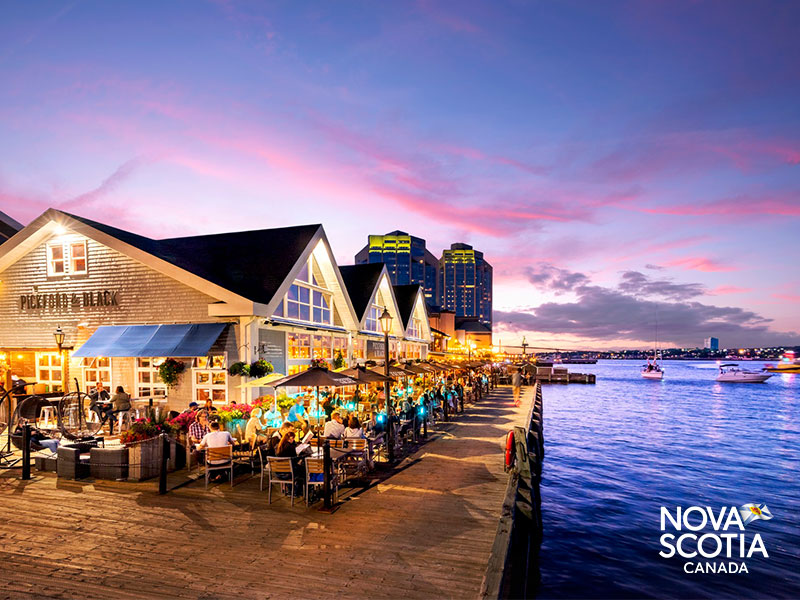 Halifax Waterfront. Image courtesy of Tourism Nova Scotia
Halifax Waterfront. Image courtesy of Tourism Nova Scotia
Nova Scotia
Sharing the Bay of Fundy with New Brunswick, Nova Scotia is the largest Atlantic Canada province by population with plenty to offer. With Halifax as its capital, the waterfront here is one of the most-visited destinations, boasting a 4 km (2.5 mi) boardwalk which spans from the Canadian Museum of Immigration at Pier 21 to Casino Nova Scotia. Browse boutique shops, dine along the waterfront and visit the oldest continually operated farmers' market in North America. Open year-round on weekends, it's a great spot for fresh local food and beverages.
 The lighthouse at Peggy's Cove, Nova Scotia. Image courtesy of Tourism Nova Scotia
The lighthouse at Peggy's Cove, Nova Scotia. Image courtesy of Tourism Nova Scotia
Away from the boardwalk, the waterfront continues along Nova Scotia's 13,000 km (8,000 mi) coastline. Enjoy tidal bore rafting, hiking, kayaking and canoeing or simply visiting a lighthouse. With around 150 lights scattered along the province's ragged coast, we recommend the fishing village of Peggy's Cove. It's like something out of a postcard, with the lighthouse the most photographed in the world.
As with the other provinces, you'll still find ample whale watching in Nova Scotia with over 12 species visiting each year. Take a trip to Cape Breton Island and drive the iconic Cabot Trail, all while keeping watch for the park's wildlife along the way. Voted as one of the world's most scenic drives, the Cabot Trail connects famed hiking trails in Cape Breton Highlands National Park with picturesque villages, artisanal shops and more. The Skyline Trail footpath, in particular, overlooks the gulf of St. Lawrence, known for migratory whales.
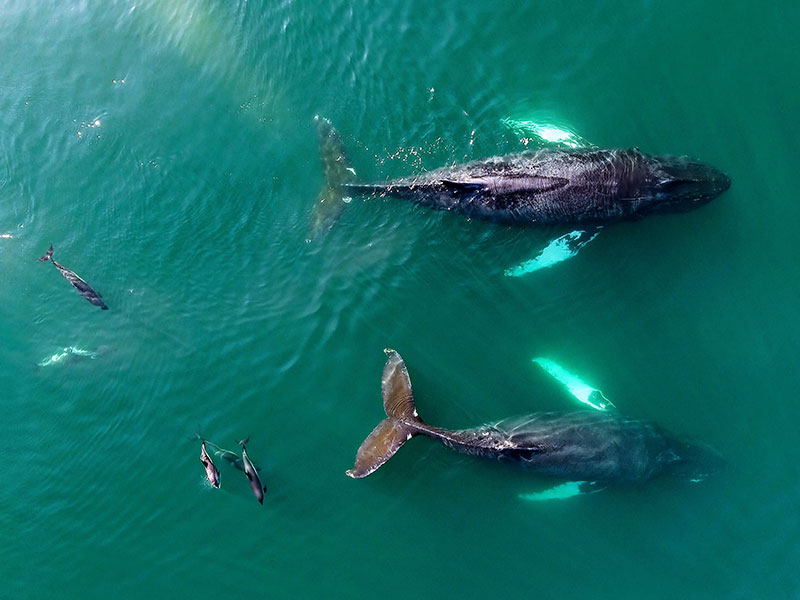 Whales and dolphins swimming in the Bay of Fundy. Image courtesy of Tourism Nova Scotia
Whales and dolphins swimming in the Bay of Fundy. Image courtesy of Tourism Nova Scotia
As one of the oldest regions of Canada, Nova Scotia has its fair share of historic sites. In the UNESCO World Heritage Town of Lunenburg you can learn tales of rum-running and seafaring plus get a glimpse of the Bluenose II, whereas at the Halifax Citadel National Historic Site and Fortress of Louisbourg National Historic Site you can learn about British and French Colonial life. For a lively taste of more current culture, be sure to attend a local ceilidh or 'kitchen party.' The Ceilidh Trail in Cape Breton connects one small community with the next, where you can enjoy live music, stepdancing and singing.
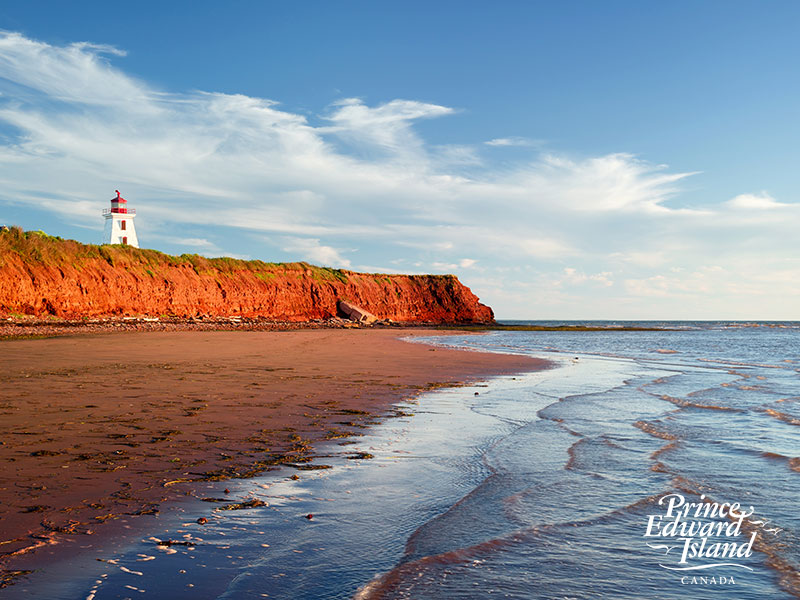 The red cliffs and sandy beaches of Prince Edward Island. Image courtesy of Tourism Prince Edward Island
The red cliffs and sandy beaches of Prince Edward Island. Image courtesy of Tourism Prince Edward Island
Prince Edward Island
The smallest province of the four, Prince Edward Island occupies a mere 5,700 square kms (2,200 square mi) and houses just 150,000 people. Charlottetown, its capital, is the closest thing to a big city that you'll find, leaving the rest of the island open to small villages, white sandy beaches, red cliffs and emerald forests.
As colorful as it is, it makes sense that Prince Edward Island inspired Lucy Maud Montgomery's novel, Anne of Green Gables. With the author born on the north shore in 1874 and raised in Cavendish by her grandparents, the book's international fame lives on today at Green Gables Heritage Place, Anne of Green Gables Museum and even in Charlottetown with the annual Anne of Green Gables - The Musical. Fans of the book will have plenty to see and do as the story comes alive before them. Check out our Wonders of the Martimes Road Trip for inclusions.
 Anne in the garden of Green Gables Heritage Place. Image courtesy of Tourism Prince Edward Island
Anne in the garden of Green Gables Heritage Place. Image courtesy of Tourism Prince Edward Island
While in Prince Edward Island, be sure to plan some time at the beach. Whether at Basin Head, Argyle Shore, Brackley Beach or Cavendish Beach, you'll have ample opportunities to nap in the sun, splash in the water, build a sandcastle, enjoy a stroll or capture an unforgettable sunset. Other activities on the island include boating, cycling, fishing, golfing, hiking, paddling, trail riding and more.
When you get hungry, Prince Edward Island has plenty of authentic and delicious cuisine to offer. Food is a way of life here, and talented chefs can take fresh, local ingredients from the land and sea to a whole other level. Be sure to try the lobster, crab, scallops, clams, mussels, fish and world-famous PEI oysters. Malpeque Bay, Raspberry Point, and Colville Bay are just some of the legendary names to order, and while you're at it, get a side of fries with the works (FWTW) which is a local dish of PEI potatoes, gravy, ground beef and canned peas.
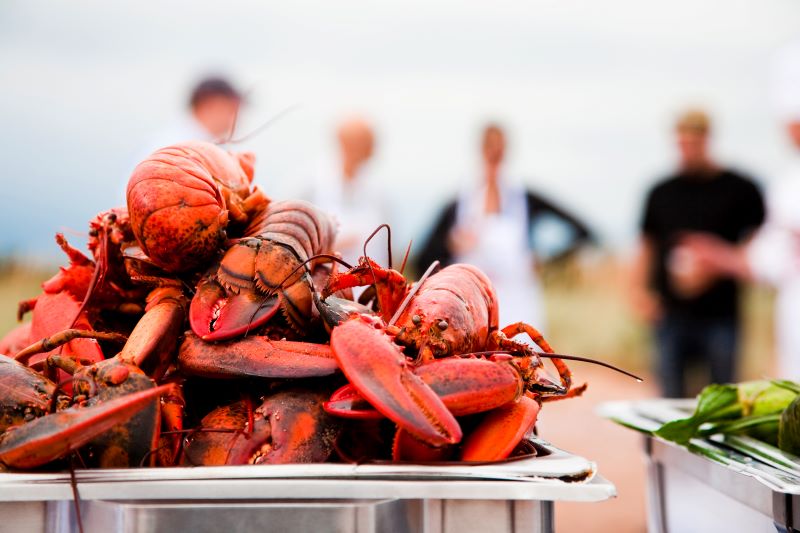 Delicious lobster ready to eat on Prince Edward Island. Image courtesy of Tourism Prince Edward Island
Delicious lobster ready to eat on Prince Edward Island. Image courtesy of Tourism Prince Edward Island
Lastly, we want to mention a few of the festivals on Prince Edward Island. Cavendish Beach Music Festival occurs each July, Charlottetown Festival runs late-May to mid-October and PEI Jazz & Blues Festival occurs each August. During the month of September, foodies will want to keep an eye out for the International Shellfish Festival, described as "the biggest kitchen party in Atlantic Canada."
 Dancing at an ocean ceilidh in Nova Scotia. Image courtesy of Tourism Nova Scotia
Dancing at an ocean ceilidh in Nova Scotia. Image courtesy of Tourism Nova Scotia
What is the Atlantic Canada time zone?
Atlantic Canada is part of the Atlantic Standard Time zone (AST) which is four hours ahead of Pacific Standard Time (PST) and one hour ahead of Eastern Standard Time (EST). This means that if it's 12 noon in California, it's 3pm in New York and 4pm in the Atlantic Canada provinces. The island of Newfoundland has its own time zone. ‘Newfoundland Time’ is 1.5 hours ahead of Eastern Time. Most of Labrador occupies Atlantic Time; however, the area from L'Anse-au-Claire to Black Tickle operates on Newfoundland Time. Thanks to it's far eastern location, Cape Spear in Newfoundland and Labrador is the first place in North America to see sunrise each day.
 Driving through Prince Edward Island National Park. Image courtesy of Tourism Prince Edward Island and Yvonne Duivenvoorden
Driving through Prince Edward Island National Park. Image courtesy of Tourism Prince Edward Island and Yvonne Duivenvoorden
How do I travel around Atlantic Canada?
Considering Atlantic Canada's geographic make-up, the best way to travel around is by car. The majority of our travelers opt to do a self-drive through the region, stopping at stunning national and provincial parks, historic sites and seaside villages as they go. The beauty is all in the freedom of the drive, allowing you to venture as you please and take as long as you'd like to get there.
The small population here means the roads are pleasant and uncrowded, and to make trip-planning even easier, ask us to include a car rental on your self-drive in Atlantic Canada. Our long-standing partnership with AVIS Car means we can give you the best rate and model for your journey, ensuring you have the proper vehicle for whatever the terrain requires.
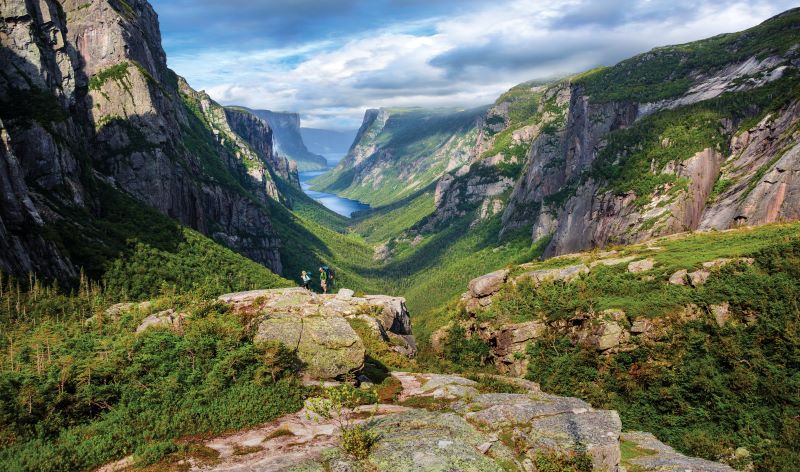 Hikers in Gros Morne National Park, Newfoundland and Labrador. Image courtesy of Newfoundland and Labrador Tourism
Hikers in Gros Morne National Park, Newfoundland and Labrador. Image courtesy of Newfoundland and Labrador Tourism
Which national parks are in Atlantic Canada?
Of the total 45 national parks in Canada, Atlantic Canada is home to nine of them. Whether you want to wander pine-filled forests, trek along rocky cliffs, climb up ancient lighthouses or cruise through picturesque fjords, you'll find each province has a fairly balanced number of parks ready and waiting to be explored.
- New Brunswick: Fundy National Park and Kouchibouguac National Park.
- Newfound and Labrador: Gros Morne National Park, Torngat Mountains National Park, Akami-Uapishk?-KakKasuak-Mealy Mountains National Park Reserve and Terra Nova National Park
- Nova Scotia: Cape Breton Highlands National Park, Kejimkujik National Park & National Historic Site and Kejimkujik National Park Seaside
- Prince Edward Island: Prince Edward Island National Park
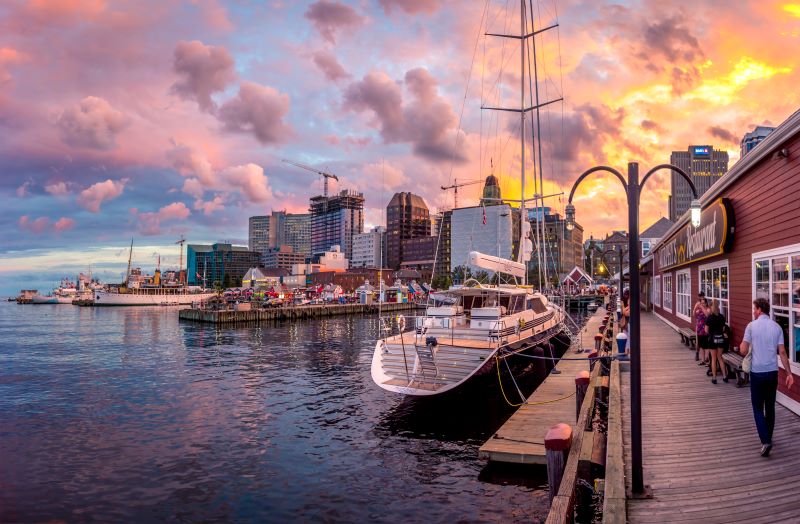 Halifax Waterfront. Image courtesy of Tourism Nova Scotia
Halifax Waterfront. Image courtesy of Tourism Nova Scotia
What are the largest cities in Atlantic Canada?
Based on population, the largest cities in Atlantic Canada are Halifax (Nova Scotia), St. John's (Newfoundland and Labrador), Moncton (New Brunswick) and Saint John (New Brunswick). On Prince Edward Island, the capital city of Charlottetown is the largest, however at just 78,858 people it's still 40% smaller than Saint John and only the 7th largest overall. And while these smaller populations may have you thinking there isn't much to do, that isn't the case — there's just more space to do them in!
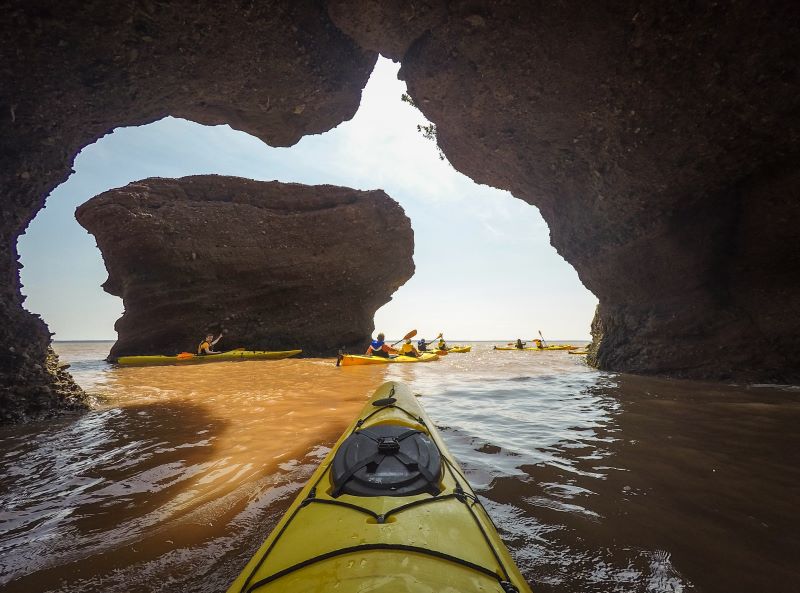 Kayaking at Hopewell Rocks in the Bay of Fundy. Image courtesy of Tourism New Brunswick
Kayaking at Hopewell Rocks in the Bay of Fundy. Image courtesy of Tourism New Brunswick
Where can I see the world's highest tides?
The Bay of Fundy is home to the world's highest and lowest tides, and Hopewell Rocks in New Brunswick is the best place to witness its entirety. With the highs and lows happening twice daily, every day you can kayak on the surface one moment and walk on the ocean floor the next. The Hopewell Rocks opens for the main travel season mid-May and continues to mid-October.
A good-to-know is that the time between high and low tides is 6 hours and 13 minutes. Tide tables are available to help plan your visit, or you can chat with one of our experts when booking our Wonders of the Bay of Fundy package.
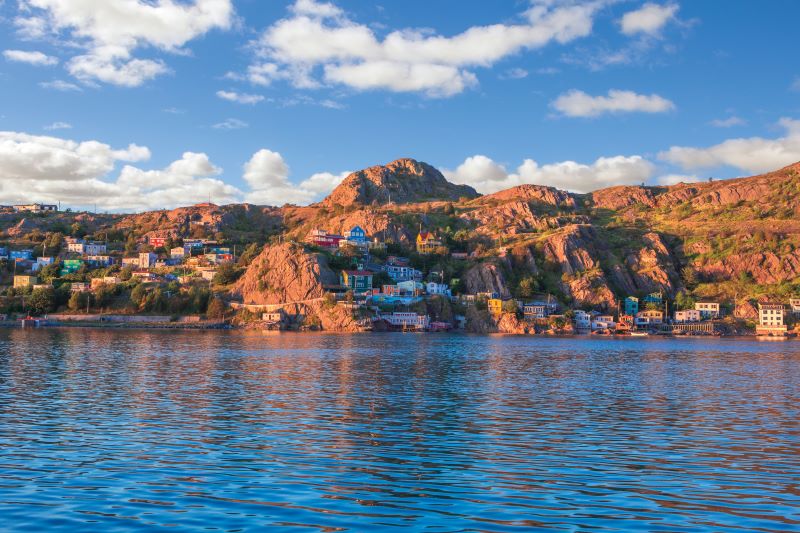 The Battery on the Avalon Peninsula of Newfoundland and Labrador. Image courtesy of Newfoundland and Labrador Tourism
The Battery on the Avalon Peninsula of Newfoundland and Labrador. Image courtesy of Newfoundland and Labrador Tourism
What time of year is best to visit Atlantic Canada?
The summer months of July and August are the best time to visit Atlantic Canada, offering daytime highs of 20 - 30° Celsius (68 - 86° Fahrenheit) and typically bright, sunny days. That said, this is also peak travel season so you'll want to book far in advance for your best choice of hotel, tour and rental car availability. If your dates are flexible, early fall (September) can also be a beautiful time to visit — the days are still warm, the evenings slightly cooler and there are fewer crowds overall.
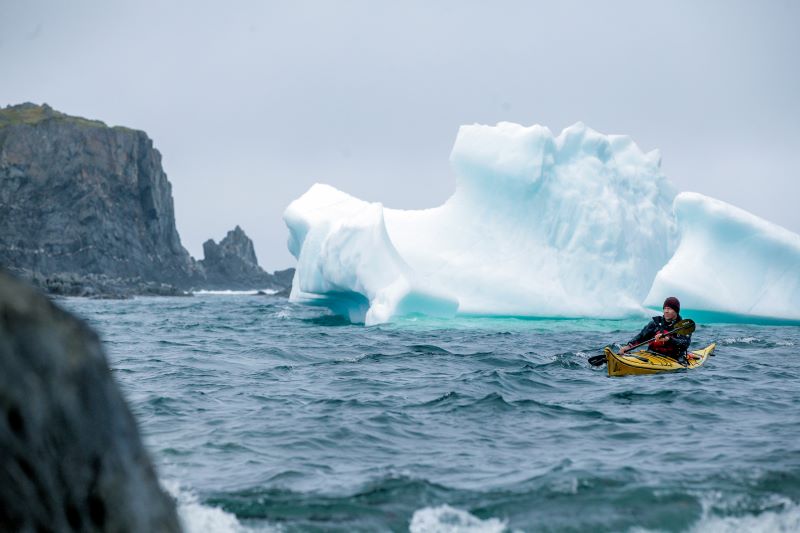 Kayaking off the coast of Quirpon Island, Newfoundland and Labrador. Image courtesy of Newfoundland and Labrador Tourism
Kayaking off the coast of Quirpon Island, Newfoundland and Labrador. Image courtesy of Newfoundland and Labrador Tourism
When is the best time of year to see icebergs?
Plan to visit the northern coast of Newfoundland and Labrador in late May or June and you'll likely see massive icebergs cutting through the Atlantic Ocean. Breaking off from the ancient glaciers of western Greenland and Canada's Arctic, these behemoth's date back 10,000 years and can weigh as much as 10 million tonnes.
Unsurprisingly, such a sight attracts travelers from all over the world. Our Iceberg Alley Newfoundland Road Trip ensures the very best viewing locations, plus you'll witness whales and the Atlantic Puffin on a boat excursion, wander small villages and feel utterly enchanted by coastal beauty. All in all, it's the perfect six-day drive to get a taste of Newfoundland and Labrador.
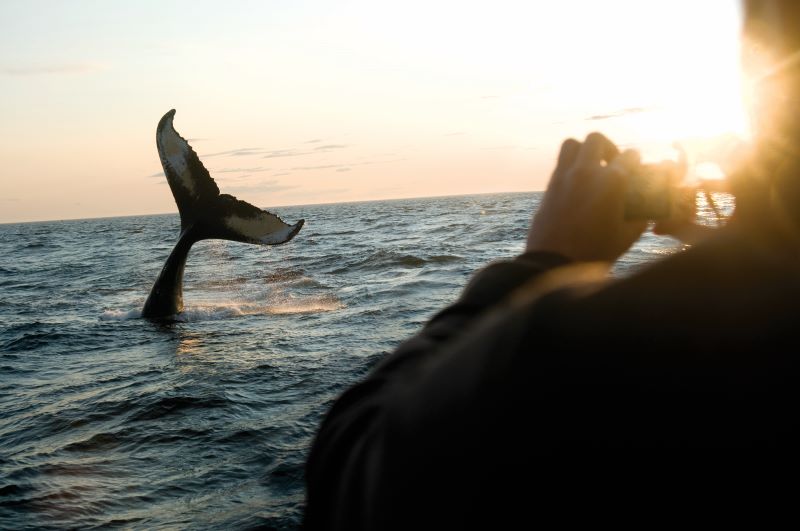 Whale watching on Brier Island, Nova Scotia. Image courtesy of Tourism Nova Scotia
Whale watching on Brier Island, Nova Scotia. Image courtesy of Tourism Nova Scotia
When is the best time of year to see whales?
Summer and early fall are the best times to go whale watching in Atlantic Canada, a place where 12 different species share the same waters. Have your breath taken away as one breaches the surface, and brace yourself for the loud smack and plume as their large body re-enters the sea. It's a majestic sight that awakens you to the beauty of mother nature, and is not to be missed.
Curious what you could see on a tour? Minke whales, pilot whales and fin whales are often sighted, as are the endangered North Atlantic Right whales. Humpback whales, blue whales and white-sided dolphins tend to be seen in the late summer months. See our Canadian Maritimes Road Trip itinerary for an 11-day tour that includes whale watching on Brier Island, Nova Scotia.
 Road tripping on Prince Edward Island. Image courtesy of Tourism Prince Edward Island
Road tripping on Prince Edward Island. Image courtesy of Tourism Prince Edward Island
How long would it take to see all of Atlantic Canada?
Generally speaking, you can drive through each of the Maritime provinces in just a couple of hours. That said, you wouldn't want to try and see them all in just one week. The reason? There's simply too much to see and explore! We typically pair New Brunswick, Nova Scotia and Prince Edward Island together for a week, and add an extra 3-7 days if you'd like time to drive through Newfoundland and Labrador as well. See our Atlantic Canada Enchanting Islands Road Trip for a great 7-day itinerary, or the Newfoundland Small Group Tour for a 13-day option.
 Fresh lobster at White Point Beach Resort, Nova Scotia. Image courtesy of Tourism Nova Scotia
Fresh lobster at White Point Beach Resort, Nova Scotia. Image courtesy of Tourism Nova Scotia
How far in advance should I book?
When you're ready to book a trip to Atlantic Canada, keep one mantra in mind: the earlier, the better. Because of its smaller size, the number of accommodations and available rental cars are limited, so we suggest planning your trip ideally 6-12 months in advance. When you book a full year before your preferred travel dates, your chances of getting everything organized just the way you want it are much higher.
Feeling inspired? Chat with one of our travel designers to create a custom trip that's just for you, or visit our Time to Travel page for trip ideas to take this summer. Prefer to simply stay in touch? Subscribe to our newsletter for up-to-date deals, trip ideas and more!

